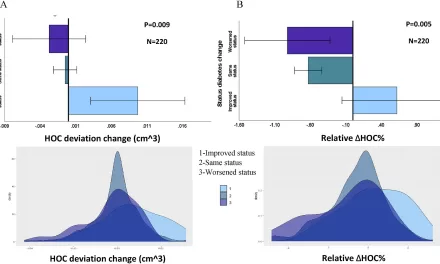New Delhi, July 28, 2024 – The World Health Organization (WHO) has called on countries in the South-East Asia Region to urgently intensify efforts to ensure universal access to prevention, vaccination, diagnosis, and treatment of viral hepatitis B and C. Despite the preventable and treatable nature of these infections, they are increasingly causing severe health issues, including liver cancer, cirrhosis, and liver failure.
Liver cancer is currently the fourth leading cause of cancer deaths in the region and the second most common cause among men. An alarming 75% of liver cirrhosis cases are attributed to hepatitis B and C infections. In 2022, approximately 70.5 million people in the South-East Asia Region were living with viral hepatitis B and C. Early testing and treatment are crucial as they can cure hepatitis C, prevent hepatitis B from progressing to liver cirrhosis and cancer, and potentially reverse the projected doubling of liver cancer deaths by 2050.
“We have the knowledge and tools to prevent, diagnose and treat viral hepatitis, yet people with chronic hepatitis B and C are still waiting to access the services they need. We need to accelerate efforts to deliver equitable services closer to communities, at the primary health care level,” said Ms. Saima Wazed, Regional Director WHO South-East Asia, on World Hepatitis Day. This year’s theme is ‘It’s time for action’.
Globally, hepatitis B and C together cause 3,500 deaths per day, with 6,000 new infections daily. An estimated 254 million people are living with hepatitis B and 50 million with hepatitis C worldwide. However, many remain undiagnosed, and even those diagnosed often do not receive adequate services and treatment. In 2022, viral hepatitis caused approximately 1.3 million deaths, matching the death toll from tuberculosis. These infections are the second leading cause of death among communicable diseases, following COVID-19.
In the WHO South-East Asia Region, the coverage for hepatitis B and C testing and treatment is notably low. In 2022, only 2.8% of people with hepatitis B were diagnosed, and a mere 3.5% of those diagnosed received treatment. For hepatitis C, only 26% were diagnosed and 14% treated.
“We have safe and effective vaccines that can prevent hepatitis B infection. Antiviral drugs are highly effective in controlling and preventing disease progression, managing chronic hepatitis B and curing most cases of hepatitis C. More needs to be done for these life-saving interventions to benefit each person, irrespective of who they are and where they live,” Ms. Wazed emphasized.
Hepatitis B and C affect both the general population and specific groups at higher risk, including those with unsafe blood supplies, medical injections, and health procedures; newborns and children at risk through mother-to-child transmission; indigenous populations; mobile and migrant populations from high-prevalence countries; and key populations such as people who inject drugs, prisoners, sex workers, and men who have sex with men.
Given that most infected individuals are unaware of their status, expanding access to testing and treatment beyond major hospitals to community-level primary health care facilities is crucial. This approach will facilitate early detection and treatment, reducing the development of liver cirrhosis and cancer, and ultimately decreasing mortality rates.
Efforts must prioritize the needs of people living with viral hepatitis, with all stakeholders, including the private sector, collaborating to mitigate the current health impacts. Country investment case studies suggest a return of US$2-3 for every dollar invested in viral hepatitis response, highlighting the financial and health benefits of combating these infections.
“Viral hepatitis is a major public health challenge of this decade. With a public health approach and leveraging countries’ investments in universal health coverage, elimination of viral hepatitis by 2030 is feasible,” the Regional Director stated. Urgent action in 2024–2026 to expand equitable access to hepatitis interventions will enable countries to achieve the Sustainable Development Goals, save lives, prevent future infections, and reduce healthcare costs. “We have the collective responsibility to save lives today and protect the health of future generations. It’s time for action,” Ms. Wazed concluded.












